Parents of young children
You have spent a great deal of time and effort preparing your pets so they are comfortable with their new environment and routines. Active supervision or secure separation of your pets and baby are critical during the first 6 months and through their toddler years.On this page
The first 6 months
Baby on the move
Actively supervise or securely separate your child and pets
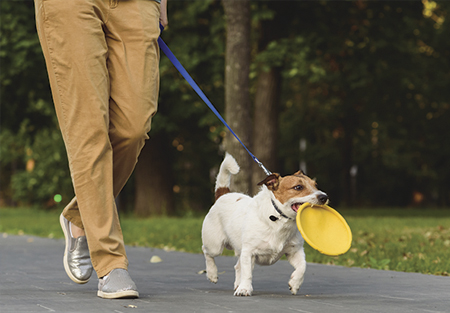
The first six months
Maintaining your pet’s routine
You have been working hard on your pet's routine before the baby’s arrival, so your pet is relaxed and comfortable with any changes. Maintaining your routines is important as it reassures your pets that all is well even with the arrival of the new family member. It is a good idea to make sure your pets also spend time away from you, even when the baby is not around. It is important that your pets do not associate the baby with being separated or alone. If you are feeding the baby and putting the dog outside, give your dog something to do, such as playing with a toy. A 'Kong' stuffed with treats or something pleasant to chew on can keep it happy and occupied.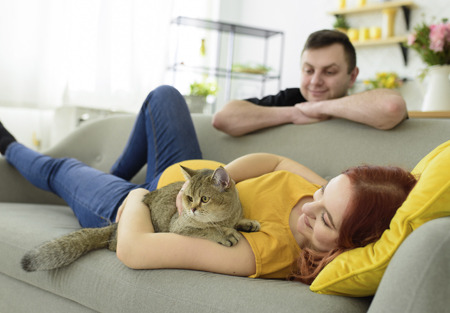
Helpful hints
- Find some daily quality time for each of your pets.
- Grooming and going for a walk are great 'quality time' activities.
- Sitting on the couch and giving your pet a pat is relaxing for both you and them.
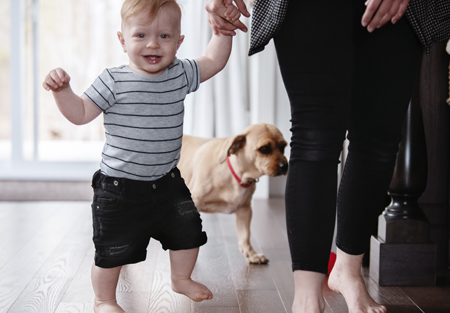
Baby on the move
An active toddler brings a new stage to the child and pet relationship. Until this point, you only had to stop pets reaching your baby. Now that the baby is capable of moving, you need to make sure your child cannot access your pets or their belongings.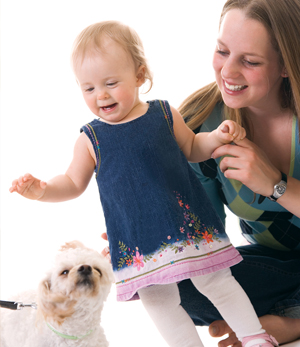
Mobility + opportunity = accident
Toddlers can accidentally hurt or upset your pet because they are unsteady on their feet. There can be painful consequences. At this stage, actively supervise or separate the pet and toddler, and begin teaching your child appropriate ways to interact with your pets. Toddlers can’t recognise the warning signs pets give, so you must actively supervise all interactions and be in control of the situation.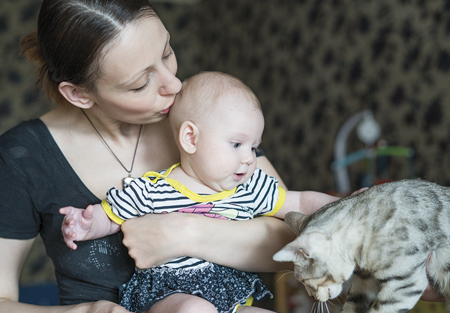
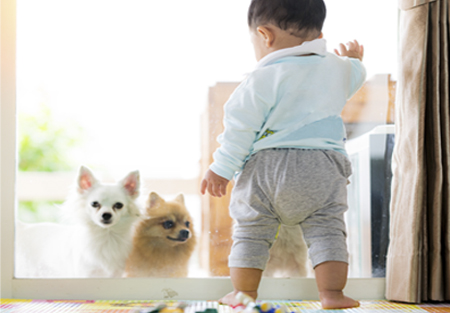
Supervise or separate
If you cannot supervise your child and your pet, safely separate them. One great idea is to establish both:- a pet-free zone for the child
- a child-free zone for the pets.

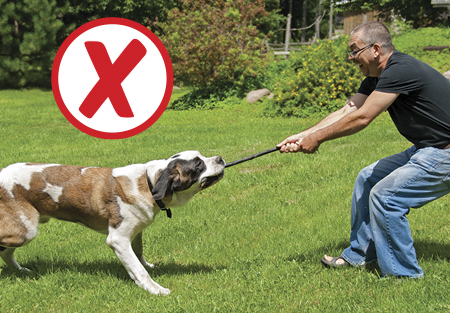
Avoiding inappropriate behaviours
Pets and children do not understand how to behave around each other. Toddlers can accidentally do things to hurt or upset your pet. An inappropriate action, such as an accidental poke in the eye from a child, only takes two seconds, and a reaction from your pet even less. Toddlers can grab fur, pull ears and tails, and poke at eyes and noses. A hug around the neck might not be considered harmless by your pet. Make sure your children do not have the chance to do these things to your pet. Remember that your pets can’t tell children to stop and will react according to their instincts. If they feel threatened or hurt and can’t escape, they may bite or scratch. Once your child is mobile, make sure your pets and child can't access each other without supervision.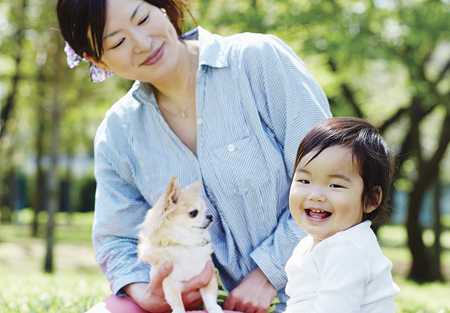
Avoiding risks with your pets
Dogs and small children As your baby grows, look into things that need changing, such as more baby gates when the child begins to crawl and walk. This time will come faster than you might think.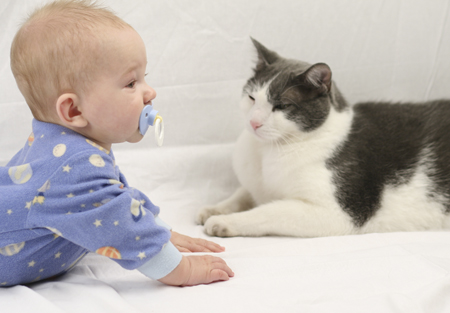 Cats and small children
Cats are a smaller threat in relation to injuries needing hospitalisation, but a child’s delicate skin and a cat’s claws are not a good mix. Keep in mind that a toddler and a cat are similar heights, so their faces and eyes are at risk.
A small child’s jerky movements can catch a cat unaware and cause it to defend itself. Usually a cat’s first reaction, when feeling threatened, is to escape. But if they can't escape, they might scratch, or even bite in extreme cases.
Cats and small children
Cats are a smaller threat in relation to injuries needing hospitalisation, but a child’s delicate skin and a cat’s claws are not a good mix. Keep in mind that a toddler and a cat are similar heights, so their faces and eyes are at risk.
A small child’s jerky movements can catch a cat unaware and cause it to defend itself. Usually a cat’s first reaction, when feeling threatened, is to escape. But if they can't escape, they might scratch, or even bite in extreme cases.
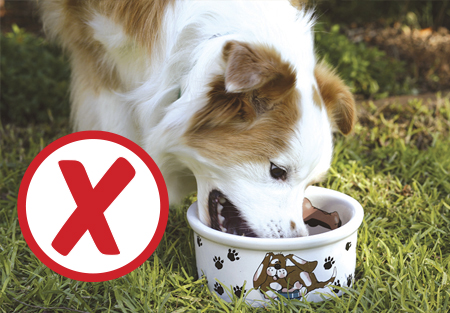

High risk situations
Research shows there are situations and behaviours that are considered high-risk for dog bite injuries with young children. Make sure you minimise these opportunities to greatly reduce the risk of incident or injury.Helpful hints
Make sure your pets are left alone when they are:- sleeping
- eating or chewing a bone
- playing with toys
- unwell or injured
- on their bed or in their kennel
- using the litter box or scratching pole.
- play roughly
- tease or hurt your pets
- handle your pets inappropriately
- grab your pets around the neck
- squeeze your pets
- wrestle your pets on the floor or ground.
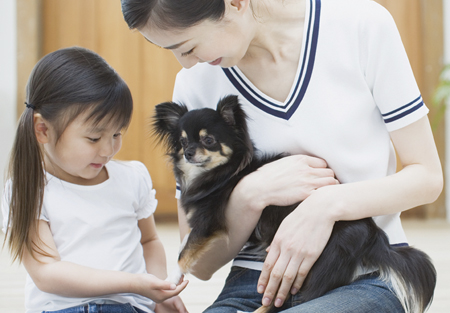
Modelling positive behaviours
Toddlers learn from us all the time. Research shows a high percentage of learning is done before we start school. Pets also remember what they learn at a young age. It is very important to model positive behaviours. If you play roughly with your pets, then your toddler will do the same. Your pet may act inappropriately because you have taught them to react this way. Before you begin rough play with your pet, ask yourself:- What am I teaching my child?
- What am I teaching my pet?
- Do I want my pet to play with my child the way it plays with me?
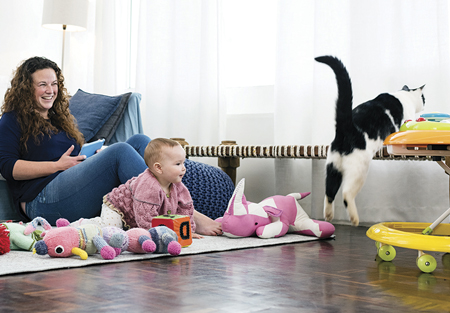
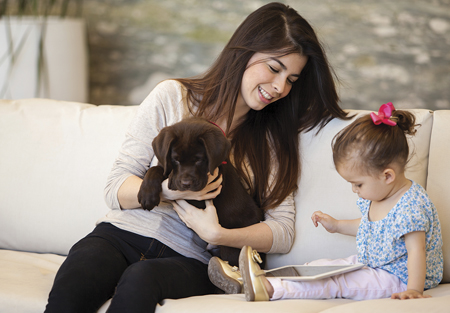
Actively supervise or securely separate your child and pets
What is active supervision?
All interactions between your pets and baby need to be actively supervised. This means you are always close enough to intervene straight away. Pets and children don’t understand how they should behave around each other. While your baby is not mobile, make sure your pets can only access your child when you are actively supervising. When your child becomes mobile you will need to consider that your child will be able to approach the pet.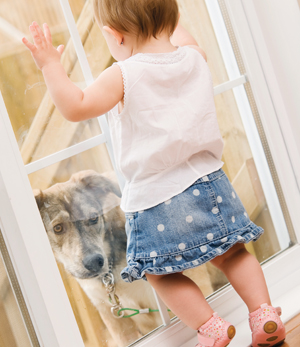
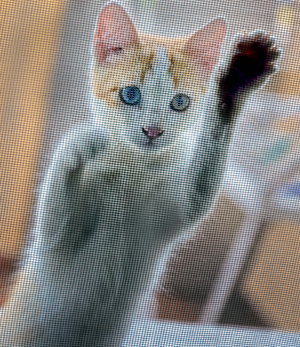
What does it mean to securely separate?
If you can't actively supervise, then you must securely separate your child and your pet. Make sure your extended family and visitors are also strict in following the ‘supervise or separate’ rule and any other house rules you have in place. Make sure there are positives for your pet during separation time, such as toys, treats, or a quick game to keep them happy.Helpful hints
- Create a safe and secure area to separate your pets from your baby.
- Never assume your pets are securely separated, always check to make sure.
- A dog barrier or security type door to the nursery for cats will make sure your pets don’t disturb your sleeping baby.
- Set up house rules, such as making sure all doors and gates are closed behind you.
- Have back-up plans for when you need to leave quickly in the event of an unexpected phone call or knock on the door.
- You can securely separate very easily by putting your pets outside or in a room such as the laundry.
- Make sure there are plenty of things to keep your pets happy and occupied when they are separated.
- As your child becomes mobile, establish child free areas for the pets to rest in, away from the child.
- As your child grows, consider setting up child and pet free areas outside.
- Placing a box of treats near the back door makes access easy for you and helps make sure your pets are happy to go outside.